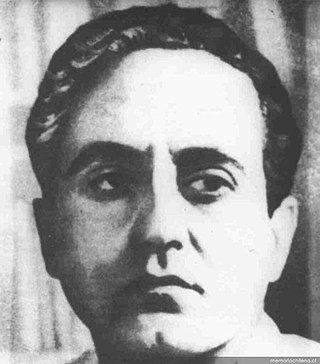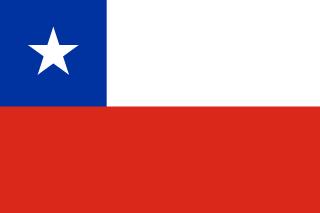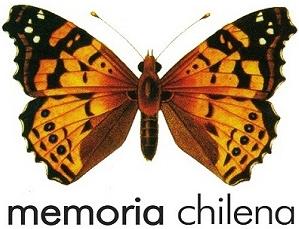
Lucila Godoy Alcayaga, known by her pseudonym Gabriela Mistral, was a Chilean poet-diplomat, educator, and humanist. She was the first Latin American author to receive a Nobel Prize in Literature in 1945, "for her lyric poetry which, inspired by powerful emotions, has made her name a symbol of the idealistic aspirations of the entire Latin American world". Some central themes in her poems are nature, betrayal, love, a mother's love, sorrow and recovery, travel, and Latin American identity as formed from a mixture of Native American and European influences. Her image is featured on the 5,000 Chilean peso banknote.

Cordel literature (from the Portuguese term, literatura de cordel, literally “string literature”, [koʁˈdɛw]) are popular and inexpensively printed booklets or pamphlets containing folk novels, poems and songs. They are produced and sold in street markets and by street vendors in Brazil, mainly in the Northeast. They are so named because they are hung from strings to display them to potential customers, and the word for rope in Portuguese is corda, from which the term cordel is derived.

Miguel Salinas Arteche, best known as Miguel Arteche, the name he adopted after legally reversing his maternal and paternal surnames in 1972, was a Chilean poet and novelist. He was born in Nueva Imperial, Cautín, 9th Region, on June 4, 1926, but spent most of his adult life in Santiago, Chile working as an academic. He was also awarded government positions, both in Chile and abroad. His writings appeared first in the Anthology of the Generation of 1950, compiled by Enrique Lafourcade, a well-known Chilean writer.
Elicura Chihuailaf Nahuelpán is a Mapuche Chilean poet and author whose works are written both in Mapudungun and in Spanish, and have been translated into many other languages as well. He has also translated the works of other poets, such as Pablo Neruda, into Mapudungun. He is the recipient of the 2020 National Prize for Literature, the first Mapuche writer to receive this award.

Enrique Lihn Carrasco was a Chilean writer, literary critic, and cartoonist, mostly known as a poet, but who also wrote essays, short stories, novels, plays, and comic books.

Chilean literature refers to all written or literary work produced in Chile or by Chilean writers. The literature of Chile is usually written in Spanish. Chile has a rich literary tradition and has been home to two Nobel prize winners, the poets Gabriela Mistral and Pablo Neruda. It has also seen three winners of the Miguel de Cervantes Prize, considered one of the most important Spanish language literature prizes: the novelist, journalist and diplomat Jorge Edwards (1998), and the poets Gonzalo Rojas (2003) and Nicanor Parra (2011).

Diego Dublé Urrutia was a Chilean poet, painter, and diplomat. He won the Chilean National Prize for Literature in 1958.

Raúl Zurita Canessa is a Chilean poet. He won the Chilean National Prize for Literature in 2000.
Stella Díaz Varín, also known as La Colorina, was a Chilean poet of the Generation of '50. Her unprecedented deep and philosophical style, as well as her controversial personality, marked a before and after in Chilean poetry.

"Estadio Chile", or "Somos Cinco Mil", is the common name of an untitled poem and song credited to Víctor Jara and penned in the days prior to his death. Jara was tortured and killed by the Chilean Army over several days in Santiago's Estadio Chile during the 1973 Chilean coup d'état.

Memoria Chilena is a Chilean cultural website which, according to its own words, "offers investigations and documents related to key topics which make up the Chilean identity, accessible through the areas of history, literature, social sciences, music, and visual arts." Memoria Chilena is, also, a virtual library, which preserves material from the Biblioteca Nacional de Chile and other institutions from the Dirección de Bibliotecas, Archivos y Museos (DIBAM).
Stella Corvalán Vega was a Chilean writer and poet. She mainly explored the genre of poetry ascribing itself to an aesthetic stance close to surrealism. She is included together with Homero Arce, María Elvira Piwonka, Mila Oyarzún, and others in the group of writers known as the Generation of '38.

Eliana Navarro Barahona was a Chilean poet. Her poetry was praised from an early date by literary critic Hernán Díaz Arrieta. Her poetry has been studied in various Chilean and foreign universities and her work appears in many national and foreign anthologies.

Gloria Dünkler is a Chilean writer, and winner of the 2016 Pablo Neruda Award. She is best known for her poetry, although she also collects folktales.
Rosabetty Muñoz Serón is a Chilean poet and professor who is linked to the cultural movements Chaicura from Ancud, Aumen from Castro, and Índice and Matra from Valdivia. She is a recipient of the Pablo Neruda Award and the Poetry Altazor Award of the National Arts.

Isabel Gómez Muñoz is a Chilean poet, winner of the 1997 Pablo Neruda Award.

Óscar Castro Zúñiga was a Chilean writer and poet. His literary work covered both the lyrical genre and the narrative genre, much more realistic and close to the criollismo movement.

Defence of the Idol is the only book written by Chilean poet Omar Cáceres. It was originally published in Santiago by Norma publishing when Cáceres was thirty years old. Due to the numerous errors included in the first edition, the author decided to burn the majority of the copies of the book, keeping only the several books needed for his 1996 posthumous reprint, under the care of Pedro Lastra, through LOM Ediciones.
María Elvira Piwonka Moreno was a Chilean writer and poet. She is a laureate of the Santiago Municipal Poetry Prize and the Santiago Municipal Literature Award.

Emilia Pincheira Oyarzún was a Chilean writer, poet and human rights activist who wrote poetry and novels. She is included together with Homero Arce, María Elvira Piwonka, Stella Corvalán, and others in the group of writers known as the Generation of '38. Oyarzún was a recipient of the Municipal Poetry Prize of Santiago.
















